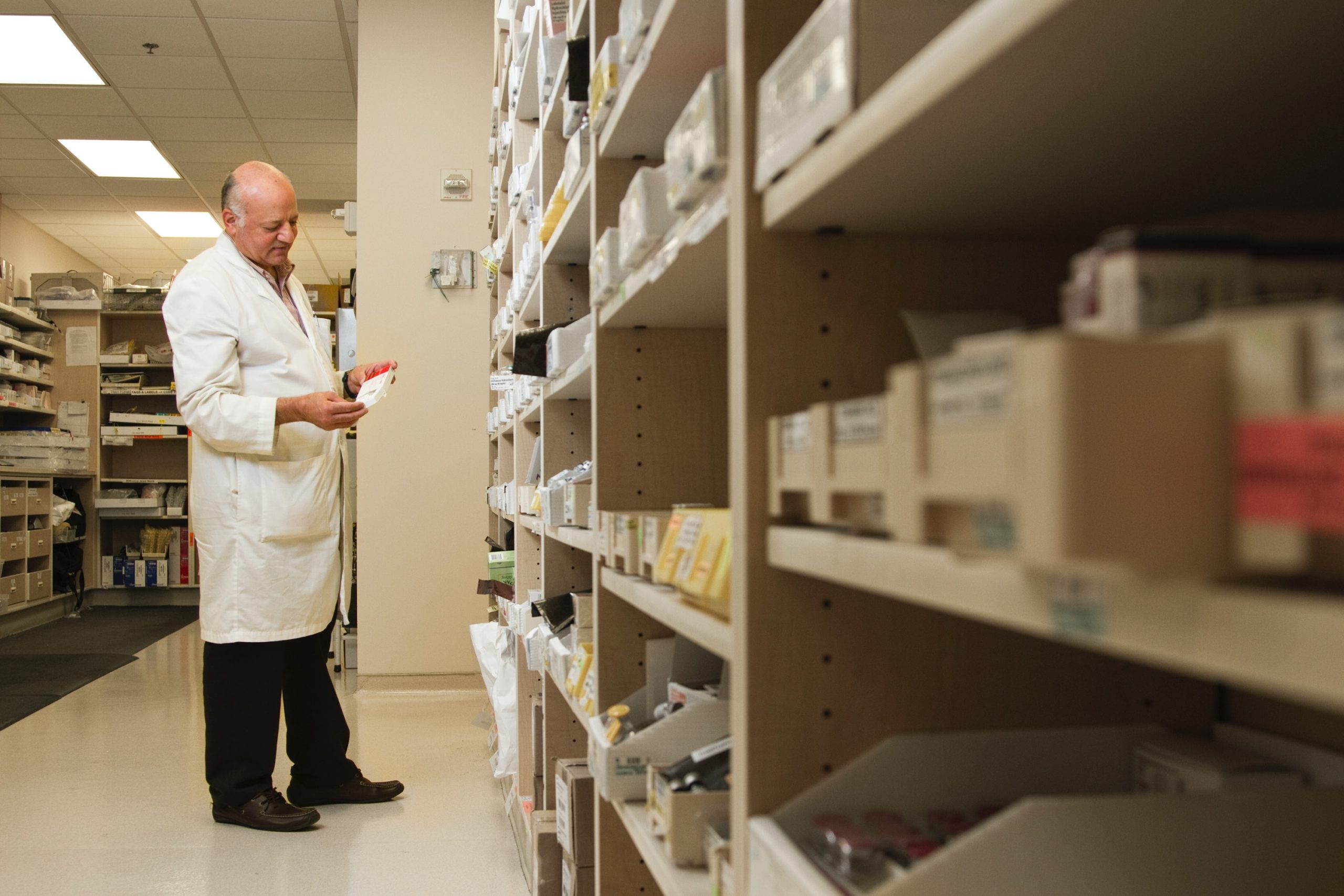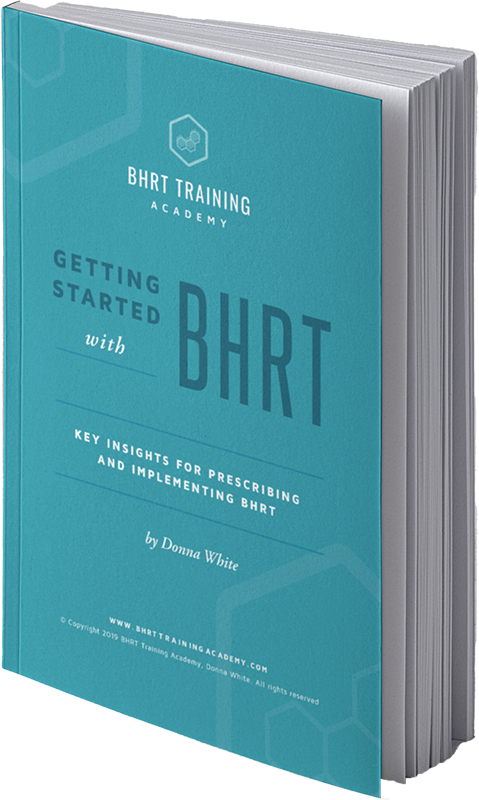Bioidentical Hormone Replacement Therapy: Frequently Asked Questions

Bioidentical Hormone Replacement Therapy (BHRT) is a comparatively new therapy. As a medical provider talking to your patients about the potential benefit of this treatment, you want to be as informed as possible.
You may have a lot of questions about Bioidentical Hormone Replacement Therapy—is it best for your patient? How is it administered, exactly? What is the difference between BHRT and traditional HRT?
The answers to these frequently asked questions will help you fill in some knowledge gaps so you can feel more confident advising your patients about Bioidentical Hormone Replacement Therapy and help them make the right decisions.
Frequently Asked Questions: BHRT Training
What is Bioidentical Hormone Replacement Therapy?
Bioidentical hormones and endogenous hormones have the same molecular structure.
To put it simply, Bioidentical Hormone Replacement Therapy is a prescription alternative to the more traditional Hormone Replacement Therapy (HRT).
But unlike HRT, Bioidentical Hormone Replacement Therapy uses hormones that are identical in molecular structure to endogenously produced hormones.
Since bioidentical hormones have the exact molecular configuration of endogenous hormones, they have the same exact biological function and follow the same metabolic pathways. They are also converted into other hormones as well as the same metabolites that endogenous hormones convert to.
Bioidentical hormones are originally derived from a molecule called diosgenin which is found in either soy or yam, which is converted through a series of chemical processes. The resulting hormone is then processed in FDA approved pharmacies or compounding pharmacies.
Is Bioidentical Hormone Replacement Therapy effective?
Indications are that BHRT is highly effective, especially for women and men experiencing symptoms of hormone imbalance and hormone deficiency.
How is Bioidentical Hormone Replacement Therapy implemented?
Bioidentical Hormone Replacement Therapy is administered on a case-by-case basis after thoroughly assessing each patient’s individual hormonal status.
Based on medical history, symptoms, lab work as well as other factors, each patient’s hormonal deficiencies and imbalances are determined and a course of treatment is prescribed accordingly.
Then, as treatment progresses for approximately 8 – 12 weeks, modifications are made according to continued testing results and clinical response. After the resolution of initial symptoms, semi-annual evaluations will continue to monitor the patient’s response. Often therapy will be readjusted after periods of stress or other physical changes.
Bioidentical Hormone Replacement Therapy can be a profitable, rewarding addition to your practice. Read this post to learn how the anti-aging industry is one of the fastest-growing industries on the planet.
Are bioidentical hormones FDA approved?
A growing significant body of research supports the efficacy and safety of bioidentical hormones.
Of note, Dr. Kent Holtorf published an article in the January 2009 issue of Postgraduate Medicine. He cited 196 research studies and commented, “Physiological data and clinical outcomes demonstrate that bioidentical hormones are associated with lower risks, including the risk of breast cancer, cardiovascular disease, and are more efficacious than their synthetic and animal-derived counterparts. Until evidence is found to the contrary, bioidentical hormones remain the preferred method of hormone replacement therapy.”
How is Bioidentical Hormone Replacement Therapy prescribed?
Bioidentical hormone prescriptions are available in two ways. They can be prescribed either through conventional pharmacies where patients can access manufactured hormones or through compounding pharmacies.
Prescriptions from conventional pharmacies are FDA approved. Examples are estradiol patches or pills, testosterone patches and gels, and progesterone pills.
Custom prescriptions that are prescribed by the physician specifically for individual patients are processed at compounding pharmacies. Since they are created on a case-by-case basis, they do not require FDA approval, however, compounding pharmacies only source hormones from FDA registered facilities.
FDA approval is required for mass-produced drugs made by large manufacturers but is not possible for each compounded formulation. It is important to note that every compounding pharmacy must comply with the regulations set by the applicable State Board of Pharmacy.
What is the importance of testing hormones?
Hormone testing is essential throughout the entire course of treatment. Starting at the assessment phase, hormone testing assists practitioners in detecting hormone imbalances and monitoring dosing. Regular testing also encourages patient compliance with regular testing results and updates.
Due to the intricate interactions of hormones, it is critical that testing is inclusive of the sex hormones, adrenal hormones, and thyroid hormones to assess hormone status. The combination of lab results with a review of symptoms and history effectively direct an appropriate course of treatment. Regular testing is necessary for optimal patient outcomes.
What are common Bioidentical Hormone Replacement Therapy prescriptions?
Prescriptions may include individual hormones or multiple hormone combinations.
Hormones commonly prescribed are:
- Progesterone
- Biest – a combination of Estriol and Estradiol
- Estriol
- Estradiol
- Testosterone
- DHEA
Bioidentical hormone prescriptions are available in different dosing forms. These include:
- Transdermal creams or gels applied to the skin
- Patches (estradiol) applied to the skin
- Pellets (testosterone or estradiol) inserted just under the skin in the buttocks
- Vaginal cream or suppositories
- Oral capsules or pills (progesterone and DHEA)
- Troches or lozenges
- Sublingual drops
Why use compounded Bioidentical HRT prescriptions?
The benefit of compounded prescriptions for Bioidentical Hormone Replacement Therapy is the ability to provide customized dosing for a patient’s specific needs. Several hormones can be combined into the same prescription and administered through several different types of delivery such as creams, vaginal suppositories, oral capsules, and sublingual lozenges.
Also, compounded hormones tend to cost less than manufactured hormones.
What is the difference between transdermal and oral delivery of hormones?
Transdermal hormones (cream, gel, patches) have been demonstrated to be highly absorbable, effective in symptom management, and well tolerated by patients. They also have the additional benefit of bypassing the first-pass effect of the liver. This can mean lower doses for your patient as more of the hormone is directly available rather than being metabolized purely through the digestive tract.
There are important differences between oral administration and transdermal hormone delivery. During first-pass metabolism in oral administration, 90% of the hormones are converted to metabolites, leaving only 10 percent of the hormones in their original forms. Therefore, to achieve an effective dose, the HRT practitioner must prescribe as much as ten times the dose compared to transdermal dosing. For example, the typical dosing of oral progesterone is 100-200 mg compared to 10-20mg of transdermal progesterone.
Ready to learn more about how BHRT could fit into your practice? Click here to schedule a strategy call and get started.
Enjoyed this article? Here are three more to help you:
Four common types of hormonal imbalance: Menopause
Learn BHRT and be your own boss.
Thinking about starting a BHRT practice? Here are 7 things to consider.

Get the quick read ebook,
Getting Started with BHRT -
Key Insights to Prescribing and Implementing BHRT.
CME's - Earn while you learn.
